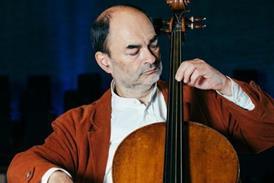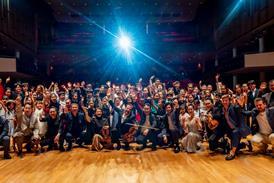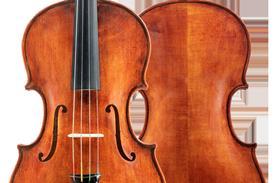- More from navigation items
- Home
- News
- For Subscribers
- Student Hub
- Playing Hub
- Podcast
- Lutherie
- Magazine
- Magazine archive
- Whether you're a player, maker, teacher or enthusiast, you'll find ideas and inspiration from leading artists, teachers and luthiers in our archive which features every issue published since January 2010 - available exclusively to subscribers. View the archive.
- Jobs
- Shop
- Directory
- Contact us
- Subscribe
- Competitions
- Reviews
- Debate
- Artists
- Accessories
Masterclass: Bruch’s Kol Nidrei op.47

Amanda Forsyth talks about finding inspiration from a Jewish cantor to help her play emotional slides and singing phrases
Explore more Masterclasses like this in The Strad Playing Hub
Read more premium content for subscribers here
I first studied this beautiful piece with William Pleeth when I lived in London as a teenager, and I performed it very often as a student. At that time my dad – a composer and trombonist, but also an amateur pianist – had rented an upright piano for our flat, so that he could accompany me. His sustaining pedal didn’t work but when we played Kol nidrei together he insisted on doing the whole introduction anyway, so that all the long notes from the string parts sounded short and plucked! Even today I remember that sound every time the orchestra begins.
In concert I like to pair this piece with two others: Bruch’s Adagio on Celtic Themes op.56 and also his Canzone op.55. Kol nidrei in particular gives me floods of goosebumps all over my body when I play it, and it has often brought me to the brink of tears.
Inspired by a cantor
Bruch based this piece on the Kol nidrei sung by a cantor in synagogues before the main service begins on every Jewish festival of Yom Kippur (bit.ly/3MzQ9xn). When I was younger I played it in many churches and synagogues, although I am not Jewish myself, but only when I was living in Ottawa later in my life did I decide to go to a synagogue on Yom Kippur to hear how a Kol nidrei should really sound. The cantor sang it in a way that was guttural and heart-wrenching, and he used expressive slides that are so important to remember in this music. Now I think about that sound whenever I play this piece.
Approach to slides
There are so many ways you could approach slides here. I like to play them all over the place, in an old-fashioned romantic style, sometimes concealing one with my bow, then digging into the string to bring out another, moving slowly or quickly, lightly or heavily, very often on one finger. I definitely don’t like a square finger-by-finger approach, because that isn’t vocal at all. It’s quite obvious if someone hasn’t thought about the voice from the way they play.
Already subscribed? Please sign in
Subscribe to continue reading…
We’re delighted that you are enjoying our website. For a limited period, you can try an online subscription to The Strad completely free of charge.
* Issues and supplements are available as both print and digital editions. Online subscribers will only receive access to the digital versions.




























